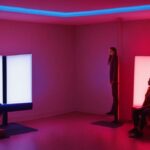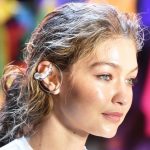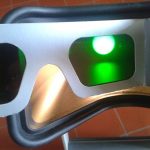Light therapy is an increasingly popular treatment that uses specific wavelengths of light to improve mood, sleep, and skin health. However, many people are concerned about whether light therapy can damage their eyes. In this article, we will explore this question in depth, looking at the science behind light therapy and its effects on the eyes.
Light therapy is a treatment that involves exposure to specific wavelengths of light to treat various health conditions, including depression and seasonal affective disorder. However, there have been concerns about whether light therapy can harm your eyes, especially with prolonged exposure. In this article, we will explore this topic in depth and answer the question: can light therapy damage your eyes?
Understanding Light Therapy
Before we delve into the potential risks of light therapy, it’s important to understand what it is and how it works. Light therapy involves the use of specific wavelengths of light to treat a variety of conditions, including depression, sleep disorders, and skin conditions like acne.
Light therapy works by stimulating the body’s natural circadian rhythms, which regulate sleep, mood, and other bodily functions. By exposing the body to specific wavelengths of light, light therapy can help reset these rhythms and improve overall health and well-being.
There are several different types of light therapy, including bright light therapy, blue light therapy, and red light therapy. Each type uses different wavelengths of light and is used to treat different conditions.
Bright Light Therapy
Bright light therapy involves exposure to bright, white light, typically in the morning or early afternoon. This type of therapy is used to treat seasonal affective disorder (SAD), a type of depression that occurs during the winter months when there is less natural sunlight.
Blue Light Therapy
Blue light therapy involves exposure to blue light, which has been shown to improve mood and reduce the symptoms of SAD. It is also used to treat acne and other skin conditions.
Red Light Therapy
Red light therapy involves exposure to red or near-infrared light, which is thought to promote healing and reduce inflammation. It is used to treat a variety of conditions, including arthritis, joint pain, and skin conditions like eczema and psoriasis.
One of the main concerns people have about light therapy is whether it can damage their eyes. The short answer is that it depends on the type of light therapy and how it is administered.
Light therapy can improve mood, sleep, and skin health by stimulating the body’s natural circadian rhythms. However, the potential risk of eye damage depends on the type of light therapy, intensity, and duration of exposure. Blue light therapy has been shown to have potential risks to eyes, but the risks of eye damage from light therapy are generally low, especially with red light therapy. To use light therapy safely, follow the manufacturer’s instructions, choose a reputable product, use eye protection if recommended, start with shorter exposure times, and talk to your healthcare provider before starting any new treatment.
The Science Behind Light Therapy and Eye Damage
The potential for light therapy to damage the eyes depends on several factors, including the type of light therapy, the intensity of the light, and the duration of exposure.
Blue light therapy, in particular, has been shown to have potential risks to the eyes. One study published in the journal Eye found that exposure to blue light at high intensities for extended periods of time can cause damage to the retina and increase the risk of macular degeneration.
Another study published in the journal Environmental Health Perspectives found that exposure to blue light at night can disrupt the body’s natural circadian rhythms and increase the risk of obesity, diabetes, and other health problems.
However, it’s important to note that these studies are based on high-intensity exposure to blue light over extended periods of time. The risks of eye damage from light therapy are generally low, especially with red light therapy, which is considered to be the safest type of light therapy for the eyes.
Light therapy can be a safe and effective treatment for a variety of conditions, but it’s important to understand the potential risks, especially to the eyes. While blue light therapy has been shown to have some risks, the risks of eye damage from light therapy are generally low, especially with red light therapy. To use light therapy safely, it’s important to follow the manufacturer’s instructions carefully, use eye protection if recommended, and talk to your healthcare provider before starting any new treatment.
How to Use Light Therapy Safely
If you’re considering using light therapy, it’s important to follow the manufacturer’s instructions carefully to avoid any potential risks to your eyes or other parts of your body.
Here are some tips for using light therapy safely:
- Choose a reputable manufacturer and product
- Follow the recommended exposure times and distances
- Use eye protection if recommended by the manufacturer
- Start with shorter exposure times and gradually increase as tolerated
- Talk to your healthcare provider before starting any new treatment
FAQs: Can Light Therapy Damage Your Eyes?
What is light therapy and how is it used?
Light therapy, also known as phototherapy, is a method of treatment that involves exposure to specific types of light to manage various health conditions. Doctors may use light therapy to treat skin disorders, seasonal affective disorder, depression, and sleep disorders, among other conditions. This therapy aims to improve your overall well-being by following a regular schedule.
Can light therapy harm your eyes?
Light therapy is generally considered safe, and there are no identified immediate risks associated with it. However, prolonged exposure to particular types of light, such as ultraviolet (UV) light or blue light, such as from sunlight or electronic devices, could cause eye damage. Blue light exposure, for instance, can contribute to digital eye strain, which includes symptoms like eye fatigue, headaches, and blurred vision.
What can you do to protect your eyes during light therapy?
Before light therapy, ensure you discuss the procedure with your healthcare provider to determine if it is safe and right for you. Your provider will also advise you on how to protect your eyes during treatment. Depending on the type of therapy, you may need to wear eye protection, such as goggles or eye patches. Additionally, you should avoid staring into the light source directly and maintain a safe distance from the lightbox.
Are there any precautions to take before starting light therapy?
Yes, you should take certain precautions before starting light therapy to avoid potential eye damage or other health risks. For instance, people with certain skin conditions or eye problems, such as lupus, psoriasis, or history of eye surgery, may not be suitable candidates for light therapy. Moreover, if you are taking medications like retinoids, antipsychotics, or other drugs that make your skin more sensitive to light, light therapy may not be recommended.
What should you do if you experience any eye discomfort during light therapy?
Although uncommon, you may experience temporary side effects like eye strain, dry eyes, or blurred vision during light therapy. In such cases, talk to your healthcare provider, who will evaluate your symptoms and recommend the best course of action. Typically, your doctor may suggest reducing your exposure time or the intensity of light or adjusting your eyes’ position. With proper guidance and precautions, it is unlikely to experience any long-term eye damage during light therapy.







